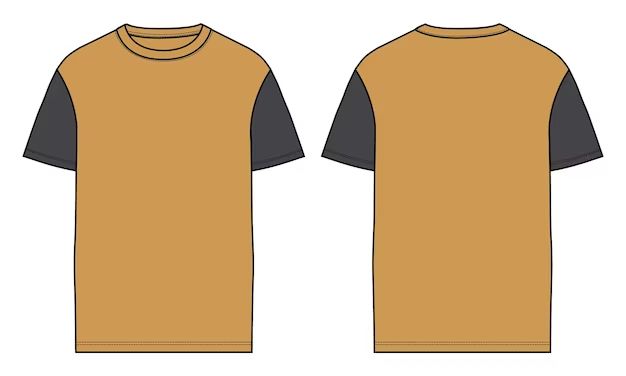Tone and colour are related concepts in visual arts, but they have distinct meanings. Tone refers to the lightness or darkness of a colour, while colour refers to the hue. Despite their differences, tone and colour work together to create the overall appearance of an artwork.
What is Tone?
Tone describes the lightness or darkness of a colour. It is a major determinant of value in visual art. Tone is created by adding black or white to a pure hue to make it darker or lighter.
In drawing and painting, artists use tonal values to depict light and shadow and create the illusion of three-dimensional form on a two-dimensional surface. The range of tones used is called the tonal scale – the spectrum from the lightest tone (white) to the darkest tone (black).
Key terms related to tone include:
- High key – an image dominated by light tones
- Low key – an image dominated by dark tones
- Tonal range – the range of tones from light to dark
- Mid-tones – tones in the middle of the tonal range
Skillful use of tonal variation allows artists to create realism, depth, and visual interest in an artwork. It establishes light source, volume, and spatial relationships on the picture plane. Tone is a powerful tool for achieving lighting effects and mood in a painting or drawing.
What is Colour?
Colour refers to the hue or pigment of an object. It is an element of visual perception based on the different wavelengths of light reflected by an object. Primary colours are red, yellow and blue. All other colours are derived from combinations of primaries.
The properties of colour include:
- Hue – the colour name such as red, green
- Value – the lightness or darkness of a colour
- Saturation – the intensity or purity of a colour
Colour has a strong effect on the senses and can be used by artists to create different moods in a painting. Warm colours like red, orange and yellow evoke excitement and energy. Cool colours like blue, green and purple are calming and tranquil. Vibrant colours tend to advance in space; muted colours recede.
In visual art, colour can be used realistically or symbolically. It establishes focus, balance, and dimensionality. Colour relationships create harmony and discord. Masterful use of colour is a hallmark of great painters.
| Tone | Colour |
|---|---|
| Refers to lightness or darkness of a colour | Refers to the hue or pigment |
| Describes the value of a colour | Describes the chroma of a colour |
| Created by adding black, white or grey | Created by combinations of primary hues |
| Establishes lighting, form, spatial relationships | Establishes focus, balance, mood |
The Relationship Between Tone and Colour
Though they refer to different properties of colour, tone and colour are intricately linked. Colour tone is determined by how light or dark a colour appears. Tones are derived from hues by changing their value. Saturation also affects the perceived lightness or darkness of a colour.
Generally, tinting a hue makes it lighter and shading makes it darker. But some colours darken or lighten differently than others. For example, shading red with black produces a very different dark tone than shading blue with black. An artist must understand the relative tones of different hues.
When painting, artists often establish tonal structure before layering on colour. Light and dark tones are blocked in, then colour is applied. This underpainting provides the value relationships that support the colour. Understanding tonal values is key to accurate portrayal of light effects and shadow.
Because hue, value and saturation all interrelate, altering one necessarily alters the others. Richly saturated colours appear lighter in value than duller hues. Yellow has inherently high value. Red appears lighter than green at the same tone. Mastering colour tone relationships is an essential skill for painters and colourists.
Using Tone and Colour Together
Though distinct, tone and colour work in tandem to create convincing depictions of form, space and light on the canvas. Tonality brings definition. Colour brings vibrancy. Excellent art integrates both harmoniously.
Some ways tone and colour work together:
- Tone creates the structure; colour fills it in
- Tone suggests volume; colour gives physicality
- Tone makes contours; colour establishes surface features
- Tone indicates shadow areas; colours illuminate the light
Many artists start with an underpainting using only tones. They block in shadows and lights with black, white and greyscale. This clarifies value relationships before applying colour. The tonal underpainting unifies the composition tonally.
Other artists start with vivid colour washes. They layer energetically brushed colour tones to map out shapes. This bright ground illuminates the painting. Darker tones and details come later to refine forms.
Learning to see tone and colour as discrete, yet interdependent facets of painting is key. Their combined use creates captivating visual effects.
When Tone and Colour Contrast
Sometimes artists intentionally contrast tone and colour for dramatic impact. Light colours against dark tones, and vice versa, intensify effects.
Some examples of tone/colour contrast:
- Pale skin tones against a dark background make portraits very striking
- Dark tree silhouettes against a bright sky are eye-catching
- Vividly saturated colours seem to glow when surrounded by neutral greys
Juxtaposing light tints and dark shades makes both seem more extreme. Contrast creates bold definition. It emphasizes and separates elements from their surroundings. Dramatic tonal and colour contrasts are often used in chiaroscuro, graphic art, posters and illustrations. But they can overwhelm in subtler works.
Conclusion
Though often conflated, tone and colour are distinct. Tone refers to values from light to dark. Colour denotes specific hues. But tone and colour work synergistically to create compelling artwork. Their creative interplay expresses light, shadow, form and mood. Mastering the relationship between colour tone and hue opens diverse artistic possibilities.

